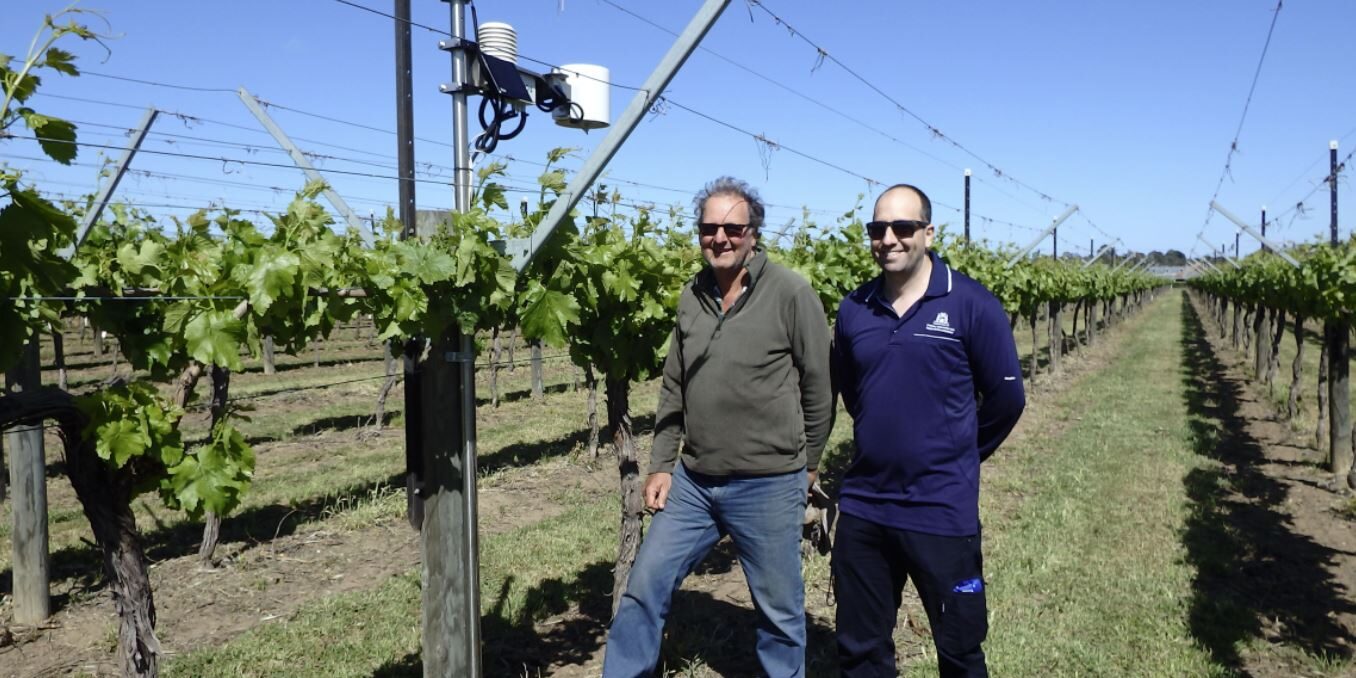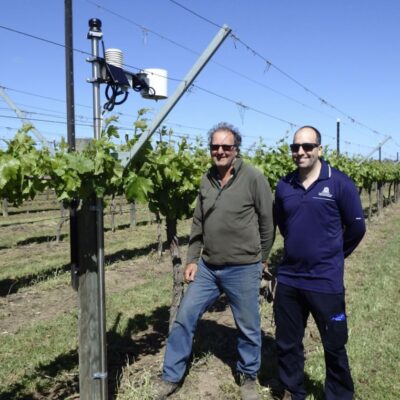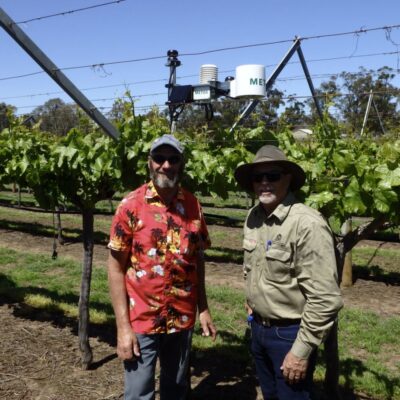High-tech weather stations are being installed on four table grape properties across the Swan Valley, South West and Gascoyne, as part of a new project to evaluate the accuracy of commercial disease risk prediction tools.
There has been a proliferation of decision support applications in recent years to improve fungicide use efficiencies by refining the timing of treatments to optimise effectiveness and reduce control costs.
This research project will examine the development of the fungal disease, powdery mildew, under local weather conditions and compare the data to that used by commercial prediction models.
The Department of Primary Industries and Regional Development is leading the three year project, with support from the Agricultural Produce Commission (APC) Table grape producers committee.
Department plant pathologist Andrew Taylor said while there was interest among local growers in the use of commercial models to help predict the risk and severity of the disease, it was important to confirm their effectiveness under local conditions.
“Many of these tools have been developed according to the growth rate and lifecycle of the disease in major table grape growing regions in Europe and California,” Dr Taylor said.
“This project seeks to understand if the decision support tools accurately predict powdery mildew infection according to the same weather data parameters as the international applications, under Western Australia’s climatic conditions and trellis production systems.”
Powdery mildew is the biggest disease threat to Australian grape production, costing the national industry $76 million per annum in lost production and control measures.
The weather stations have been installed on commercial table grape properties in the Swan Valley, Hamel and Carnarvon.
A number of parameters are being measured, including relative humidity and temperature above and within the vine canopy, as well as wind speed and direction and leaf wetness every 15 minutes.
Dr Taylor said the data from the devices could be accessed in real time via a smart phone app, which would assist researchers, growers and consultants to make more informed and timely management decisions.
“The numerous weather parameters on these weather stations enable us to monitor the micro climate-within the fruit zone of the canopy and determine what influence that has on the powdery mildew infection,” he said.
“The data can also be used by growers to assist issues outside of disease management, including crop physiology and water use efficiency.
“Some trends may also emerge from the data, which may be useful to growers to refine their disease management regimes.”
Powdery mildew is caused by the fungal pathogen Erysiphe necator, which occurs as ash grey-white powdery growth on leaves and berries, which can impair grape flavour, cause berry splitting and can reduce vine vigour and productivity.
Growers manage powdery mildew as part of an Integrated Disease Management plan, which includes good canopy management practices and fungicide treatments.
“This project is an example of the progressive nature of the WA table grape industry and adopting technology to assist them in their on farm decision making,” Dr Taylor said.
Overseas evidence has shown the use of digital tools can reduce fungicide treatments by two sprays per season, representing a significant cut in control costs.
“Rather than ‘reinvent the wheel’, this project will give growers confidence in the use of existing tools and their suitability for use in WA,” Dr Taylor said.
“It also gives us the opportunity to evaluate the effectiveness of powdery mildew control measures in WA and identify if there are any opportunities to tweak treatment strategies to improve efficiencies and reduce risk of fungicide resistance.”
More information can be found on this website about powdery mildew control options in table grapes.




